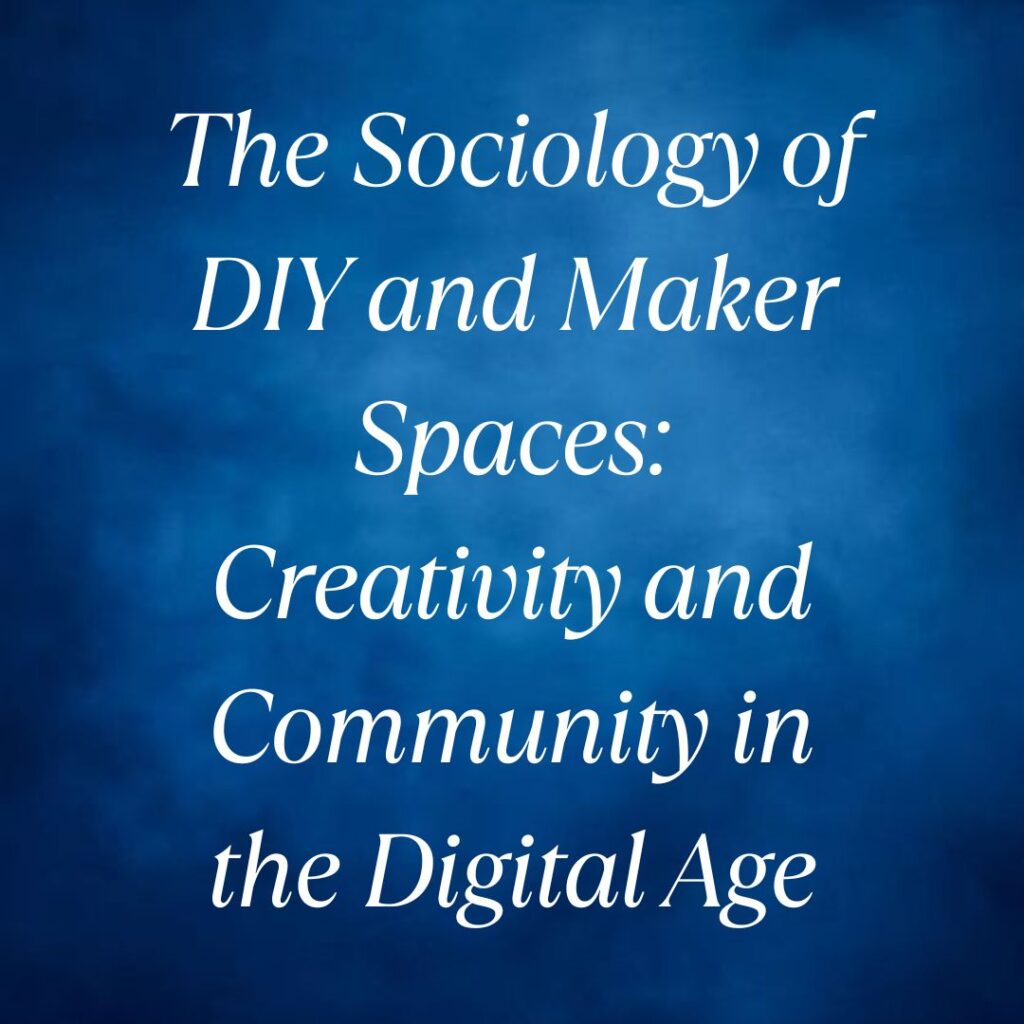In an era dominated by digital connectivity and mass production, there exists a countercultural movement that celebrates creativity, individuality, and community: the world of DIY (Do-It-Yourself) and maker spaces. These spaces have become hubs of innovation where individuals, equipped with digital tools and a shared passion for creating, collaborate and redefine what it means to be a creator in the 21st century.
The Rise of Maker Culture
The origins of maker culture can be traced back to the early hacker and tinkerer communities of the 20th century. These were groups of enthusiasts who took apart electronics, experimented with software, and pushed the boundaries of technology in their garages and basements. What began as a niche hobby has evolved into a global movement encompassing diverse fields such as electronics, woodworking, robotics, and even biotechnology.
One of the defining features of maker culture is its emphasis on accessibility and inclusivity. Unlike traditional manufacturing, which often requires specialized knowledge and expensive equipment, DIY and maker spaces are open to anyone with a willingness to learn and create. This democratization of technology has empowered individuals from all walks of life to turn their ideas into reality.
The Role of DIY Spaces in Fostering Creativity
DIY spaces provide more than just access to tools; they foster a culture of creativity and collaboration. Take for instance TechShop, a chain of maker spaces that operated across the United States. TechShop provided members with access to a wide range of tools—from 3D printers to laser cutters—and offered classes and workshops on everything from welding to woodworking. This environment not only enabled individuals to develop practical skills but also encouraged them to explore new ideas and collaborate with like-minded peers.
Similarly, Fab Labs (Fabrication Laboratories) have emerged as global networked spaces where individuals can prototype and manufacture custom products using digital fabrication tools. MIT’s Fab Lab program, launched in the early 2000s, has spawned hundreds of labs worldwide, each serving as a hub for innovation and community engagement.
Creativity in the Digital Age
The digital age has played a pivotal role in the evolution of DIY and maker culture. Online platforms such as Etsy, a marketplace for handmade and vintage goods, have enabled makers to reach a global audience and turn their hobbies into viable businesses. Social media has also played a crucial role in connecting makers with each other, facilitating knowledge sharing, and inspiring new generations of creators.
Moreover, advancements in digital design software and open-source hardware have lowered the barrier to entry for aspiring makers. Arduino, an open-source electronics platform, has become ubiquitous in maker circles for its ease of use and versatility. Projects ranging from interactive art installations to automated home systems are now within reach for anyone with a basic understanding of electronics and programming.
Community and Collaboration
Beyond tools and technology, DIY and maker spaces emphasize the importance of community and collaboration. Makers often come together to participate in hackathons, where they work intensively over a short period to develop innovative solutions to real-world problems. These events not only showcase the creativity and ingenuity of makers but also foster a sense of camaraderie and shared purpose.
The community aspect of maker culture is exemplified by events like Maker Faire, a gathering of makers, enthusiasts, and curious visitors held annually in cities around the world. Maker Faire showcases a dazzling array of projects—from giant robots to intricate handmade crafts—and provides a platform for makers to share their passion with others. The event attracts people of all ages and backgrounds, highlighting the universal appeal of creativity and innovation.
Challenges and Future Directions
While DIY and maker culture have flourished in recent years, they face challenges as they navigate an increasingly commercialized landscape. Rising rents and property prices in urban areas have forced some maker spaces to close their doors, limiting access for aspiring creators. Additionally, concerns over intellectual property rights and the ethical implications of technology have sparked debates within the maker community.
Looking ahead, the future of DIY and maker culture appears promising yet uncertain. Advances in technologies such as artificial intelligence and biotechnology are opening new frontiers for innovation, while also raising questions about the ethical and social implications of DIY practices. Nonetheless, the spirit of creativity, collaboration, and community that defines maker culture is likely to endure, inspiring future generations to embrace the ethos of doing-it-yourself.
Conclusion
In conclusion, DIY and maker spaces represent more than just a hobby or a trend—they embody a cultural movement that celebrates creativity, community, and innovation. By providing individuals with the tools and resources to create, collaborate, and learn, these spaces are shaping the way we think about technology and its impact on society. As we navigate the complexities of the digital age, DIY and maker culture serve as a reminder of the power of human ingenuity and the importance of fostering creativity in all its forms. So whether you’re a seasoned maker or a curious beginner, there has never been a better time to join the DIY revolution and discover the joy of making something uniquely your own.
Let’s embrace the spirit of DIY and maker culture, and together, let’s create a future where innovation knows no bounds.







